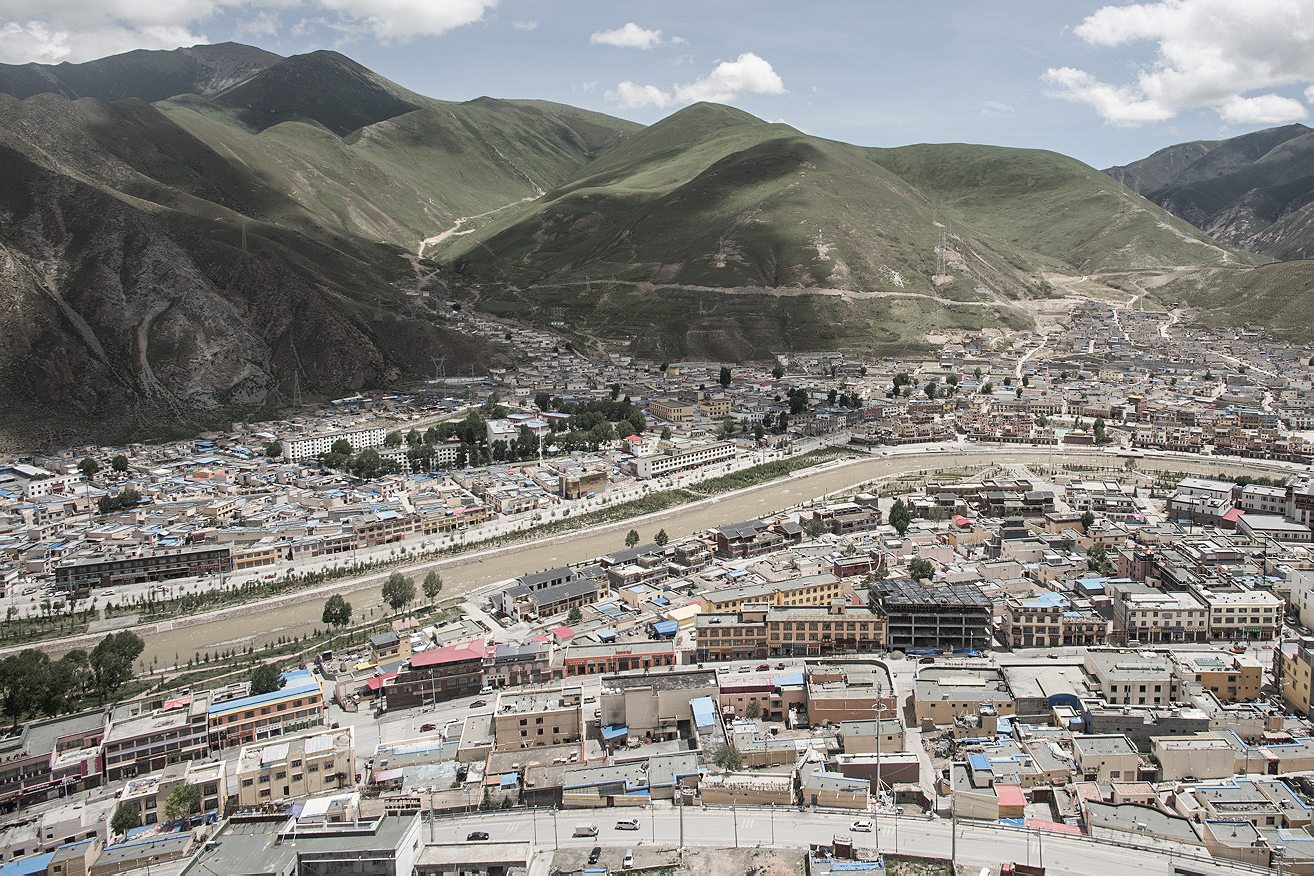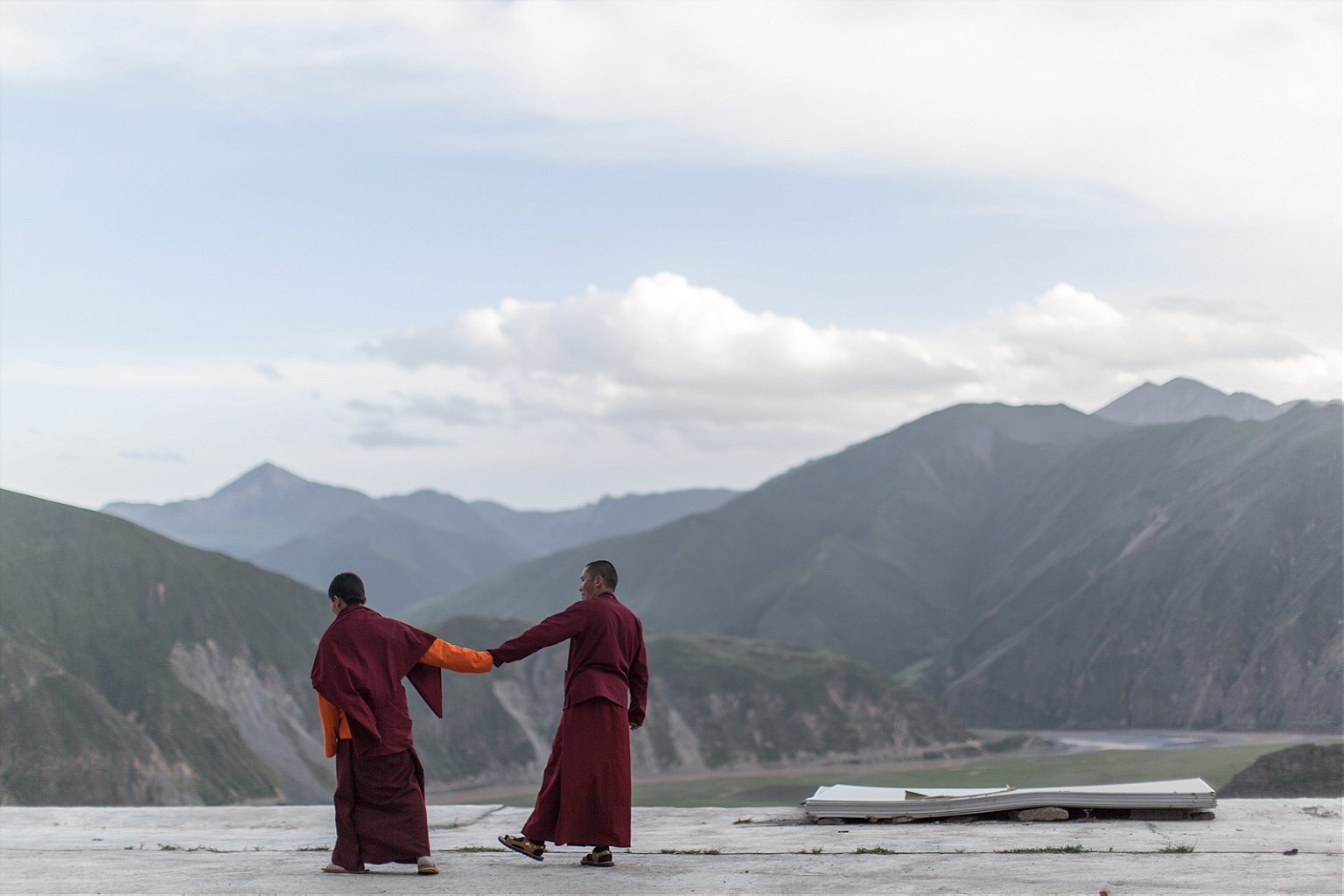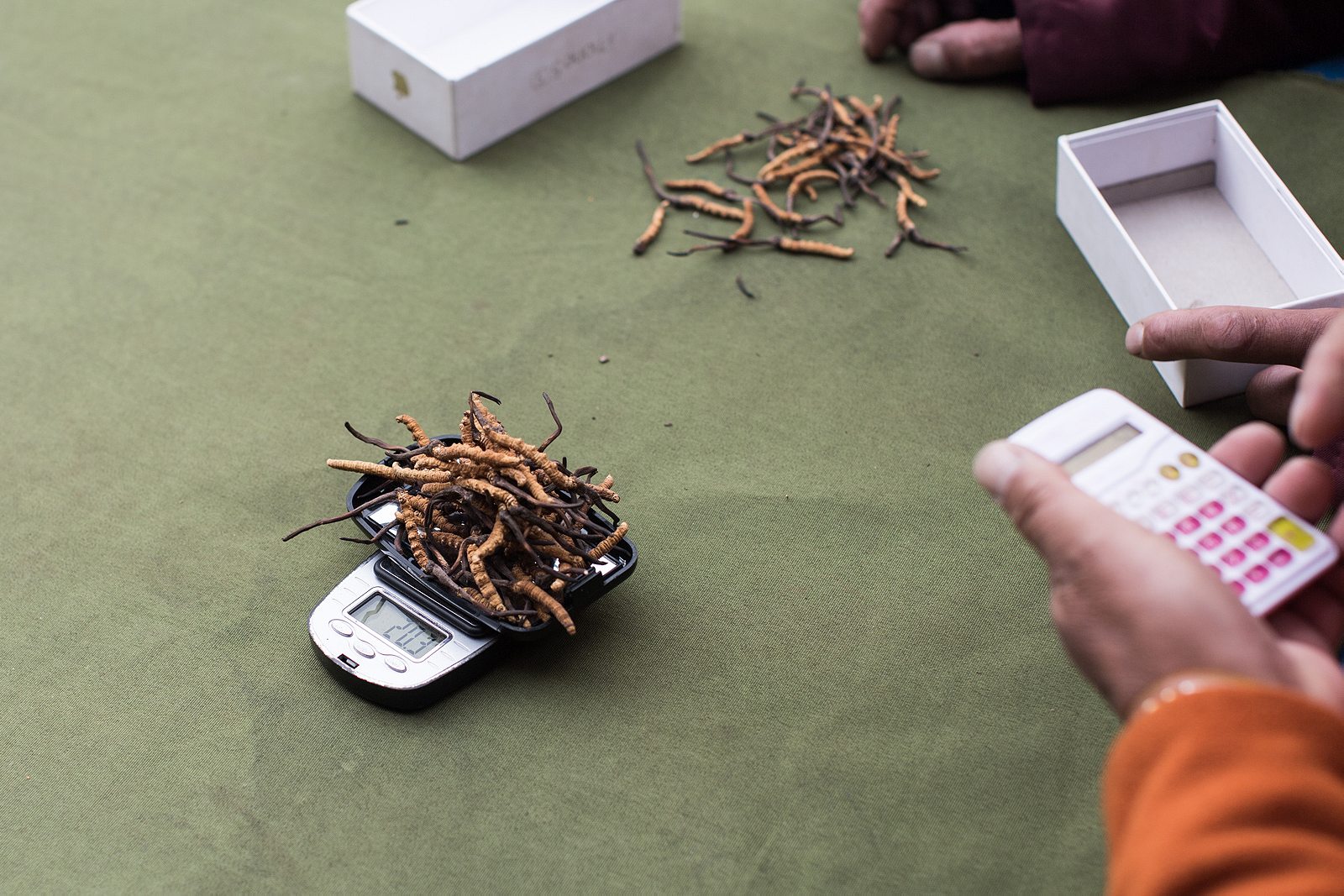Jan Chipchase journeys to the rough edges of globalization in China.
YUSHU, Qinghai Province—
“Are these from America?” the monk asked, turning five small baggies over in his hand, each containing pills for a distinct purpose: head, stomach, heart, mind, and libido.
The pills were my morning-after contribution to last night’s bender, an unexpected night out in Yushu, a Tibetan area in western China’s Qinghai province, with the monk’s entourage, which included two Chengdu businessmen in search of better karma, a gallery owner, and a number of robed disciples. The beauty of traveling alone is being able to change plans on a whim. Today, I was supposed to be on the 6 a.m. sleeper to Chengdu, but last night fate—in the form of a helpful bilingual gallery owner sauntering over to my restaurant table—intervened. That conversation turned into a toast, a night of toasts actually. Ganbei after ganbei.
I came here to better understand a part of the country that can help decode the Chinese economic miracle, and you can call my drinking companions my focus group. This place is at the edge of that miracle, where massive state investment in infrastructure have combined with huge commercial bets on residential and commercial developments. My company, Studio D, specializes in running research projects for multinationals, spotting patterns in human behavior, and turning these into insights for new products and services, and changes in strategy. Because of the rapid pace of change of technology and culture, on the surface it can look like the world is changing pretty quickly. However, the underlying values that drive human decision-making change very slowly, if at all.
China is arguably the lowest-trust consumer society in the world, one where the full spectrum of capitalism is on offer—from world-beating factories in Shenzhen to backstreet workshops that can reverse engineer the physical design of anything in a few days. Combined with a government that still emphasizes growth over health, and a lax attitude to WTO intellectual property norms, it creates a consumer landscape that accommodates everything from fake eggs to faked entire university degree courses. Many Westerners dismiss Chinese innovation as copying. They are unable to decipher the Chinese internet, resort to tropes to explain local innovation practices, and show a distinct lack of interest in a competition that can consume anything in its path.

If you want to understand the forces shaping our world for the next hundred years start with China, Brazil, India, and Indonesia. If you’re interested in consumer behavioral psychology, China is Gödel’s ontological proof, where anything is possible, and risk and reward of what is probable play out in billions of daily interactions from Tashkurgan in the west to the center of the empire, Beijing.
And if you’re wondering how long the Chinese economic miracle will last, the answer will probably be found in the bets made on commercial and residential developments in Chinese third to sixth-tier cities in Xinjiang, Gansu, Qinghai, and Tibet. You’ll pass new tower blocks as far as the eyes can see. With freshly asphalted roads and gleaming rail and air terminals, the strategy seems to be “If you build it, they will come.” The belief in economic expansion extends to the immigration arrivals building for travelers overlanding from Kyrgyzstan, which has the capacity to manage thousands of daily visitors, not just the tens I encountered the day I crossed.
I arrived in the city of Yushu the day before from Xining, the capital of Qinghai, part of a 7,000 km (4,350 mile) overland trip that started in Bishkek, capital of Kyrgyzstan. The ride to the monk’s monastery required four hours of bone-jolting, cliff-hugging, breath-taking, nausea-inducing roads following a winding Yangtze tributary upstream. Now the monk was before me, fiddling with my crushed pills. A month ago, in San Francisco, I’d discarded the pill packaging to keep my possessions on this journey hand-luggage-light, traveling with a single duffel bag. A few of the tablets were in pieces, others were ground down. The monk looked skeptical of their virtue.

Yushu is part of a region also know as Kham Tibet. In 2010 a 7.1 magnitude earthquake almost leveled the town of approximately 56,000 residents. Today it is largely rebuilt, save for a surprisingly nuanced memorial to the earthquake—a traditional building framed and retained in mid-collapse—and of course the memories of the thousands of friends and relatives killed and injured.
Chinese government investment is evident in the legion of monuments, a massive library, a bicycle-share scheme, cultural center, public squares, and a massive portrait of President Xi Jinping. The police are omnipresent, but low-key for this part of the world. The fire extinguishers and riot shields in front of the parked police vans are just for show—until, very occasionally, they are not.
I was here on behalf of clients looking for an edge in China. In a country this big and this diverse—a continent might be a more accurate description—it is useful to consider the penetration of local chains and Western retail brands. Today a typical third-tier Chinese city will have a Starbucks, a couple of KFCs, and some entrepreneur considering when and where to introduce a McDonalds. It will also have dozens of Adidas and Nike concessions. Yushu is more like fifth-tier; it has a Nike concession that may or may not be legit, and a single Dicos, the Chinese fast-food chain. That’s it.
Not that Western brands aren’t present. The preferred footwear for the basketball-loving monks at the monastery was fake Adidas and fake Nikes. Real Apple is everywhere. At one meeting in this (admittedly wealthy) monastery, each of the six monks had an iPhone, some had two. I wonder what Jobs would make of monks glancing at their iPhones between Tibetan incantations? As much as deplaning passengers at the newly built Yushu Batang Airport might gasp for breath on arrival at 3,890 meters (~13,000 feet), it plays the little cousin to other airports nearby: Kanding sits at 4,274 meters; Quamdo 4,334 meters; and the world’s highest civilian airport, Daocheng Yading, sits at 4,411 meters.
These places are the true Wild West
Lhasa, Tibet’s capital, draws the tourists and is well worth a visit, but for me, these places are the true Wild West, the rough edges of globalization. Over the years I’ve seen it increasingly tamed by Chinese state investment, ambitious engineering feats, and fearless local tour bus operators. (Fearless in bringing middle-aged, chain-smoking, underprepared tour groups onto high-alt mountains without acclimatization, letting them loose and not worrying too much about whether they’ll make it back in one piece. A spicy pot noodle is assumed to solve everything.)
The entire town of Yushu is an architectural mashup between traditional Tibetan structures; the often-shoddy finish of Chinese put-it-up and deal-with-the-consequences-later construction; and a fake Burbank-via-Beijing movie set version of Tibetan culture. In the fading light, and the quieting of the honking taxis, the acoustics on a massive flat screen hanging over the main square blaring out CCTV news, gives the place a Blade Runner feel. Or maybe that’s just the Diamox kicking in.
The level of state investment here, and in the rest of China, raises certain questions: If, in the process of reinvention, you can be anything, what do you want to be? What do you want to retain of your past? Who decides what is retained and why? And what happens to those who don’t fit that narrative?
The entire town looks old, but on closer inspection it feels like it was built yesterday. Which, due to the earthquake and “vibrant” urban planning, much of it was.
Yet only one part of public Yushu appeared untouched by time. At the very edge of town sits the fungus caterpillar market, whose modest appearance belies its social and economic impact. Mud splattered 4x4s and motorbikes block the approach alleyways that open up to reveal hundreds of Tibetans looking to buy or sell the fungus caterpillar (yartsa gunbu in Tibetan). Famous in China for its ability to treat diseases of the lungs, kidney, and male erectile dysfunction, it mostly grows in the wilds of Tibet (a smaller, less valued variety grows in Nepal). It is eaten whole, can be used in cooking, or can be left to steep in tea or barley beer for a month.

The caterpillar fungus can be found at an altitude of 3,000-5,000 meters, and needs to be picked by hand. Like many cash crops, locals prefer to sell than to consume. A single caterpillar costs $2-$10 depending on quality. A kilo can go for up to $11,000. Divided up into individual pieces, the retail value of a kilo in China is over $100,000. Based on eyeballing the volumes being carried in plastic bags, I figure about $1 million in caterpillars could be traded in this market every day during peak season. An iPhone box full of caterpillars can be worth more than the fully-specced iPhone that it previously contained. During the peak six-week harvest season that spans mid-May to early July, intensive work by a family can cover 90 percent of their year’s expenses. The market meets every day of the year, rain or shine.
China is not only the world’s largest market for smart phones, but now also for iPhones. It should be unsurprising, then, that it also has a robust internet culture, one that despite language barriers is influencing how the rest of the world creates and consumes. Take WeChat, an enormously popular app that transformed from a basic chat app into a rich platform that supports gaming, branded accounts, shopping, and money transfers. Its success is now being duplicated by heavyweight Western copycats, notably the Facebook Messenger platform. Copying from East to West marks a significant moment in the global creative center of gravity. But at the market, despite the rapid adoption of WeChat’s money transfers, most transactions are still in cash. In this corner of China, the trust in tangible still trumps the convenience of digital.
As with all markets that have seen a town evolve around them, this one has its own rituals and behaviors. The big-spending wholesale buyers draw a crowd looking to gauge current prices, read the eyes of the seller, watch the negotiation—a handshake hidden under a cloth. Each batch of caterpillars are inspected for prized straightness, size, diameter, color, dryness, and wholeness (the legs can crumple off). To remove excess dust prior to weighing, they are sifted by hand with sharp exhales.

This year, the harvest is down “perhaps due to global warming,” said one of the locals traders who guided me around the market. He was looking to make purchases from smaller sellers and with sufficient volume, he travels to Shenzhen to sell direct to retailers. It seems Xi Jinping’s anti-corruption campaign has filtered down to the provinces and lower volumes are somewhat offset by less graft by local officials.
The monastery has cellular data connectivity but is powered by solar. Overcast skies during the day meant a that the power died early. An hour later our group’s smart phones began to power down. Candles came out and the drinking continued. For all of the very visible rapid pace of change in China, some things stay constant, and some evolve slowly. One of our entourage, a Chengdu businessman looking for better karma, wistfully noted that it was no longer possible to gift government officials premium wrist watches and lavish meals, lest they be arrested.
But as a traditional medicine with hard benefits, gifting the fungus caterpillar should be just fine.